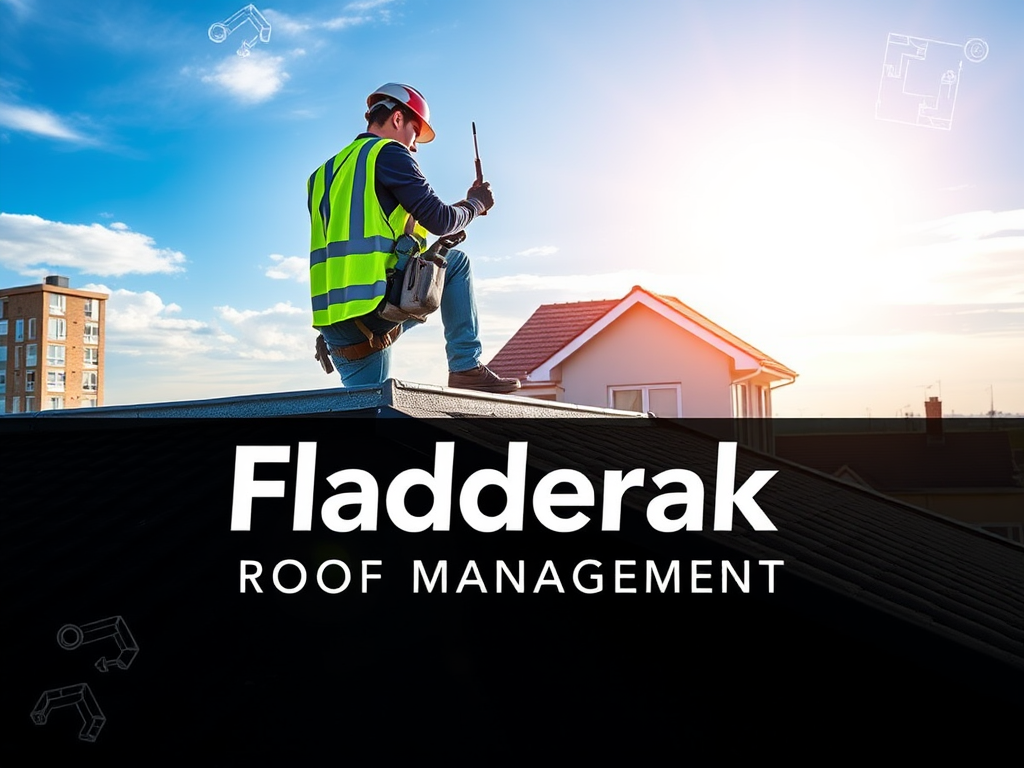Effective Fladderak roof management is crucial for maintaining the integrity, safety, and value of any building. A well-maintained roof not only protects the structure from environmental elements but also enhances energy efficiency and extends the building’s lifespan. This comprehensive guide delves into the best practices for Fladderak roof management, emphasizing preventive maintenance, addressing common issues, and implementing strategies to ensure your roof remains in optimal condition.
Understanding the Importance of Fladderak Roof Management
Fladderak Roof management encompasses all activities related to the upkeep, inspection, repair, and replacement of a building’s roofing system. Proper management ensures that the roof performs its primary function—shielding the interior from weather conditions—while also contributing to the building’s overall energy efficiency and aesthetic appeal.
Benefits of Proactive Fladderak Roof Management
-
Extended Roof Lifespan: Regular maintenance can significantly prolong the life of your roof, delaying the need for costly replacements.
-
Cost Savings: Addressing minor issues before they escalate into major problems can result in substantial financial savings.
-
Energy Efficiency: A well-maintained roof aids in regulating indoor temperatures, reducing the burden on heating and cooling systems.
-
Property Value: A sound roof enhances the property’s market value and curb appeal.
Implementing Preventive Maintenance Strategies
Preventive maintenance is the cornerstone of effective Fladderak roof management. By adopting a proactive approach, building owners can identify and rectify potential issues before they cause significant damage.
Regular Roof Inspections
Conducting routine inspections is vital for early detection of problems. Experts recommend inspecting roofs at least twice a year—preferably in the spring and fall—and after severe weather events. These inspections should focus on identifying signs of wear and tear, such as:
-
Cracked or Missing Shingles: These can lead to leaks and further structural damage.
-
Damaged Flashing: Compromised flashing around chimneys, vents, and skylights can allow water infiltration.
-
Clogged Gutters and Downspouts: Debris accumulation can impede proper drainage, leading to water pooling and potential leaks.
Engaging professional roofing contractors for these inspections ensures a thorough assessment and accurate identification of issues.
Prompt Repairs
Addressing identified issues promptly is crucial to prevent minor problems from escalating. For instance, a small leak, if left unattended, can lead to significant water damage, mold growth, and structural deterioration. Timely repairs not only preserve the roof’s integrity but also contribute to overall cost savings.
Ensuring Proper Ventilation
Adequate attic ventilation is essential for maintaining a healthy roofing system. Proper airflow prevents heat buildup and moisture accumulation, which can lead to mold growth and material degradation. Common ventilation issues include blocked vents and insufficient airflow, both of which can be mitigated through regular inspections and maintenance.
Cleaning and Maintenance
Regular cleaning of the roof and its components is vital. Removing debris such as leaves, branches, and dirt from the roof surface, gutters, and downspouts ensures proper drainage and prevents water-related damage. Additionally, maintaining rooftop equipment, such as HVAC units and solar panels, and checking for any damage after service calls can prevent accidental harm to the roofing system.
Addressing Common Roofing Issues
Understanding and promptly addressing common roofing problems is integral to effective Fladderak roof management.
Leaks and Moisture Intrusion
Leaks are among the most prevalent roofing issues and can stem from various sources, including damaged shingles, compromised flashing, or clogged drainage systems. Early detection through regular inspections and immediate repairs are essential to prevent extensive water damage.
Ponding Water
Flat or low-slope roofs are particularly susceptible to ponding water, which can lead to material deterioration and leaks. Ensuring proper drainage through well-maintained gutters and downspouts is crucial in preventing water accumulation.
Shrinkage and Blistering
Roof membranes can experience shrinkage over time, leading to cracks and splits. Blistering occurs when pockets of air or moisture become trapped under the membrane. Regular inspections can identify these issues early, allowing for timely interventions.
Legal and Regulatory Considerations
Compliance with legal and regulatory requirements is a critical aspect of Fladderak roof management, especially in multi-occupancy buildings. For instance, in the UK, the Landlord and Tenant Act 1985 mandates that property owners consult leaseholders before undertaking significant roofing works. Failure to adhere to these consultation requirements can result in financial penalties and strained tenant relations.
Implementing a Roof Maintenance Plan
A structured maintenance plan is essential for systematic Fladderak roof management. Such a plan should include:
-
Scheduled Inspections: Biannual inspections, supplemented by additional checks after severe weather events.
-
Maintenance Activities: Regular cleaning, debris removal, and minor repairs.
-
Documentation: Detailed records of inspections, maintenance activities, and repairs to track the roof’s condition over time.
Engaging professional roofing contractors to develop and execute this plan ensures adherence to industry best practices and enhances the roof’s longevity.
Conclusion
Effective Fladderak roof management is a multifaceted endeavor that requires proactive maintenance, prompt repairs, and adherence to legal obligations. By implementing regular inspections, ensuring proper ventilation, and addressing issues promptly, building owners can extend their roof’s lifespan, enhance energy efficiency, and protect their investment. A comprehensive maintenance plan, tailored to the specific.
